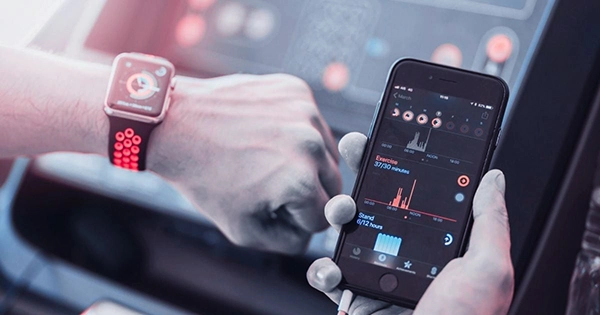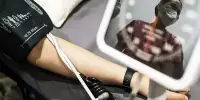VO2max is a crucial indicator of general fitness and a critical predictor of mortality risk. Normally, examinations to effectively measure VO2max require expensive laboratory equipment and are often reserved for elite athletes. The new approach does not require contextual data, such as GPS measurements, to forecast VO2max—the body’s ability to perform aerobic work—during routine activity. Instead, machine learning is used.
The Fenland Study included over 11,000 participants, and in what is by far the largest study of its kind, the researchers used wearable sensors to collect activity data from these participants. A subgroup of subjects was then evaluated again seven years later. The results were utilized by the researchers to create a VO2max prediction model, which was then tested against a third group that completed a common lab-based exercise test. The model outperforms previous methods and shows a high level of accuracy when compared to lab-based tests.

Some smartwatches and fitness trackers currently on the market make the claim to provide an estimate of VO2max, but it’s unclear whether the predictions are accurate or whether an exercise regimen is having any long-term impact on an individual’s VO2max because the algorithms underlying these predictions aren’t publicly available and are subject to change at any time.
The Cambridge-developed model is robust, transparent and provides accurate predictions based on heart rate and accelerometer data only. Since the model can also detect fitness changes over time, it could also be useful in estimating fitness levels for entire populations and identifying the effects of lifestyle trends. The results are reported in the journal npj Digital Medicine.
VO2max testing is regarded as the “gold standard” of fitness evaluations. Professional athletes, for instance, measure their oxygen intake when exercising to the point of exhaustion in order to determine their VO2max. There are more methods for evaluating fitness in a lab setting, such as heart rate response to exercise tests, but these call for a treadmill or exercise cycle. Strenuous exercise can also pose a risk to some people.
“VO2max isn’t the only measurement of fitness, but it’s an important one for endurance, and is a strong predictor of diabetes, heart disease, and other mortality risks,” said co-author Dr Soren Brage from Cambridge’s Medical Research Council (MRC) Epidemiology Unit. “However, since most VO2max tests are done on people who are reasonably fit, it’s hard to get measurements from those who are not as fit and might be at risk of cardiovascular disease.”
“We wanted to know whether it was possible to accurately predict VO2max using data from a wearable device, so that there would be no need for an exercise test,” said co-lead author Dr Dimitris Spathis from Cambridge’s Department of Computer Science and Technology. “Our central question was whether wearable devices can measure fitness in the wild. Most wearables provide metrics like heart rate, steps or sleeping time, which are proxies for health, but aren’t directly linked to health outcomes.”
The study was a collaboration between the two departments: the team from the Department of Computer Science and Technology contributed expertise in machine learning and artificial intelligence for mobile and wearable data, while the team from the MRC Epidemiology Unit contributed knowledge of population health, cardiorespiratory fitness, and data from the Fenland Study, a long-running public health study in the East of England.
For six days, study participants wore wearable technology nonstop. The sensors collected 60 values every second, producing a massive amount of data that needed to be processed. Spathis explained that in order to compress this enormous amount of data and use it to provide an accurate prediction, the right models and algorithm pipelines have to be created. This prediction is difficult because we are attempting to predict a high-level outcome (fitness) from noisy low-level data (wearable sensors), which is a free-living characteristic of the data.
To filter and extract useful information from the unprocessed sensor data and forecast VO2max from it, the researchers employed an AI model known as a deep neural network. Beyond making predictions, the trained models can be utilized to identify subpopulations that especially require fitness-related intervention.
The Fenland Study’s baseline data from 11,059 participants were compared to follow-up data collected from a subset of 2,675 of the original participants seven years later. To verify the correctness of the algorithm, the third group of 181 UK Biobank Validation Study participants undertook lab-based VO2 max testing. Both at the baseline (82% agreement) and follow-up testing (72% agreement), the machine learning model and the measured VO2 max scores had an excellent agreement.
Dr. Ignacio Perez-Pozuelo, the study’s co-lead author, said, “This study is a fantastic instance of how we can draw on expertise spanning epidemiology, public health, machine learning, and signal processing.”
According to the researchers, their findings show how wearables may precisely assess fitness, but greater transparency is required if results from commercially accessible wearables are to be believed.
Although many fitness trackers and smartwatches do, in theory, measure VO2max, Brage noted that it is exceedingly challenging to determine whether or not these claims are real. People may find it challenging to tell whether their fitness has genuinely increased or whether it has simply been calculated by a new algorithm because the models aren’t frequently disclosed and the algorithms are subject to frequent change.
“Everything on your smartwatch related to health and fitness is an estimate,” said Spathis. “We’re transparent about our modelling and we did it at scale. We show that we can achieve better results with the combination of noisy data and traditional biomarkers. Also, all our algorithms and models are open-sourced and everyone can use them.”
The wearables we use every day can be just as effective, if they have the right algorithm behind them, according to senior author Professor Cecilia Mascolo from the Department of Computer Science and Technology. “We’ve shown that you don’t need an expensive test in a lab to get a real measurement of fitness,” she said. Cardio-fitness is a crucial health indicator, but up until now, we had the tools to do it on a large scale. We can move past less reliable health proxies like the Body Mass Index (BMI) thanks to these discoveries, which may have important consequences for public health strategies.
Jesus College in Cambridge and the Engineering and Physical Sciences Research Council (EPSRC), a division of UK Research and Innovation, both contributed to the research’s funding (UKRI). A fellow at Cambridge’s Jesus College is Cecilia Mascolo.
















